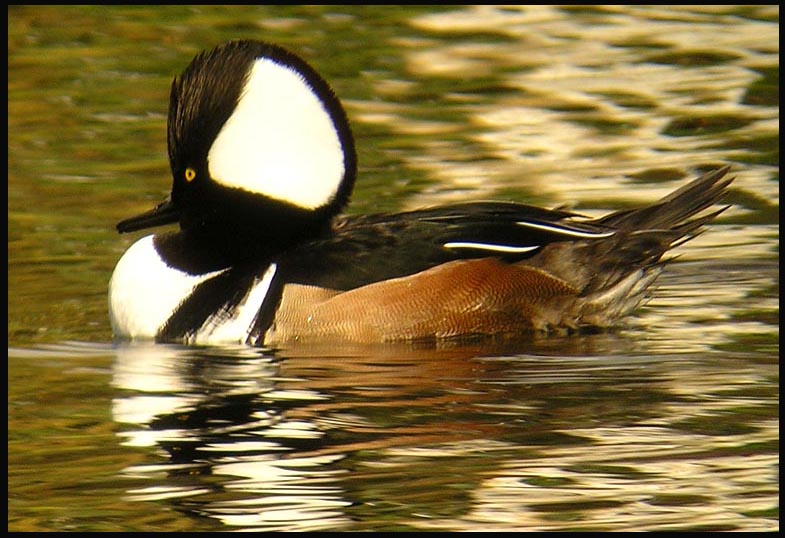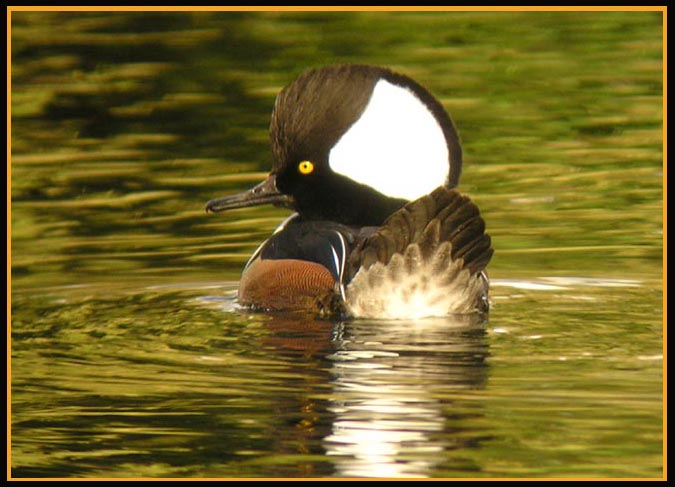|
Common Goldeneyes at Big Sur R. mouth,
5 Dec 2004
I spent two hours working with this very skittish group of six goldeneyes:
one male and four females. They were very actively diving most of the time:
focus was a big problem. I had chosen late afternoon to get the sun behind
me, and I really liked the way the water looked like a swirled palette
of color as it reflected the late autumn leaves. The late afternoon sun
gives a nice warmth to the photo. It was just fortuitous that these two
emerged close enough together to that both are with the very narrow depth
of field. They've just popped to the surface — note the water droplets
running down their primaries. I thought he was a first-year male just beginning
to show the white facial spot and a bit of iridescence. I believed she
is a first-year female just beginning to show the yellow tip to the bill.
I was surprised to see the yellow tip to the male's bill; I had thought
only females had this pattern.
Later: Peter Pyle kindly supplied comments on this photo. The
male is an adult coming out of 'eclipsed' plumage, not a first-year bird.
Adult males can sometimes have 'female-like' soft part colors in eclipse,
although it is rare. This oddity, combined with the rather late date for
a male to be in partial eclipse, makes this a very strange duck indeed.
Peter had never seen a photo or specimen of this particular combination
before. |





